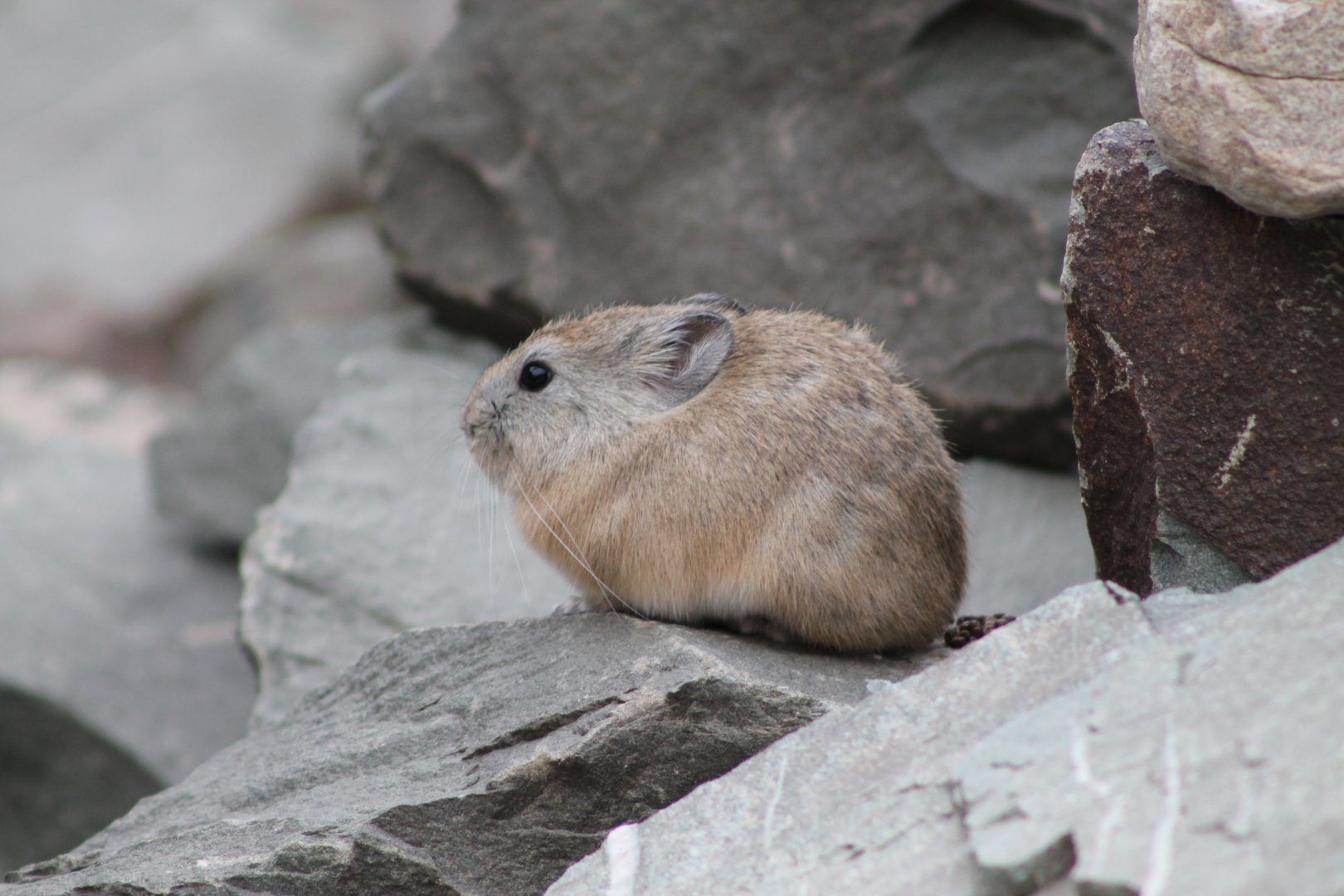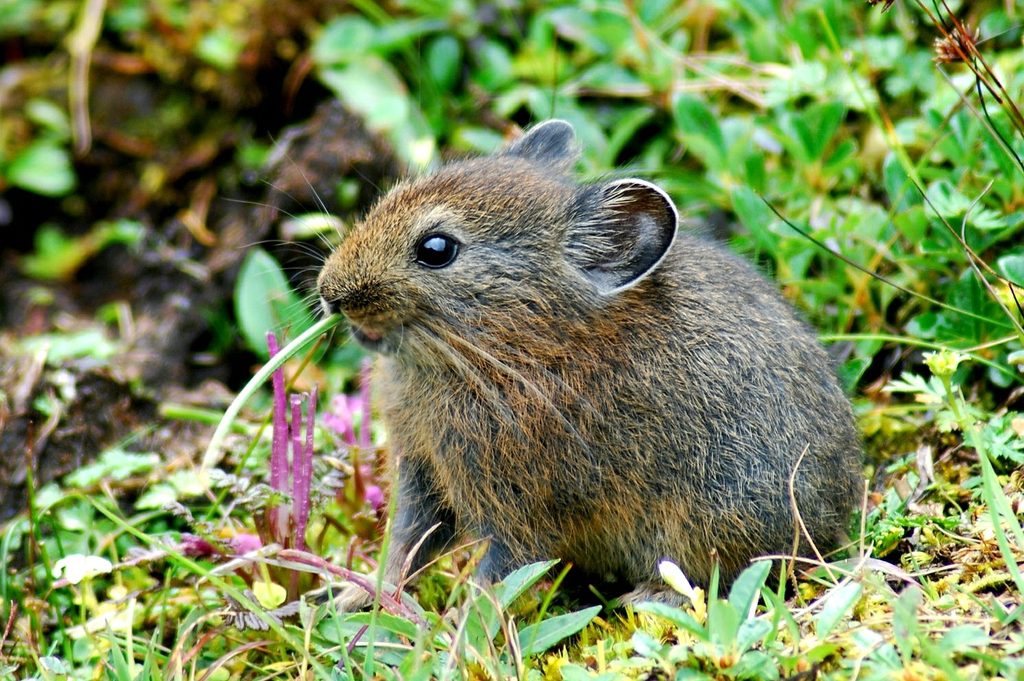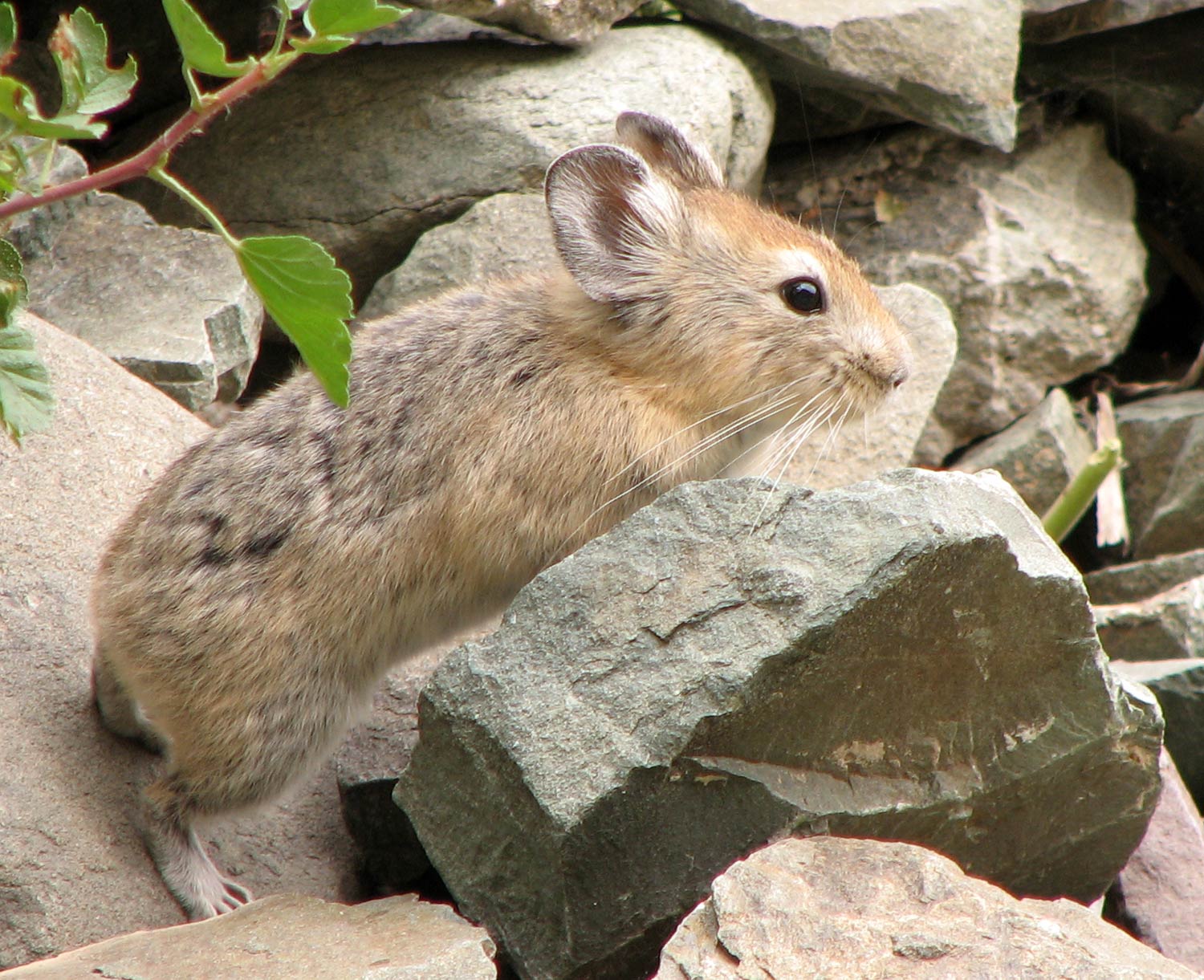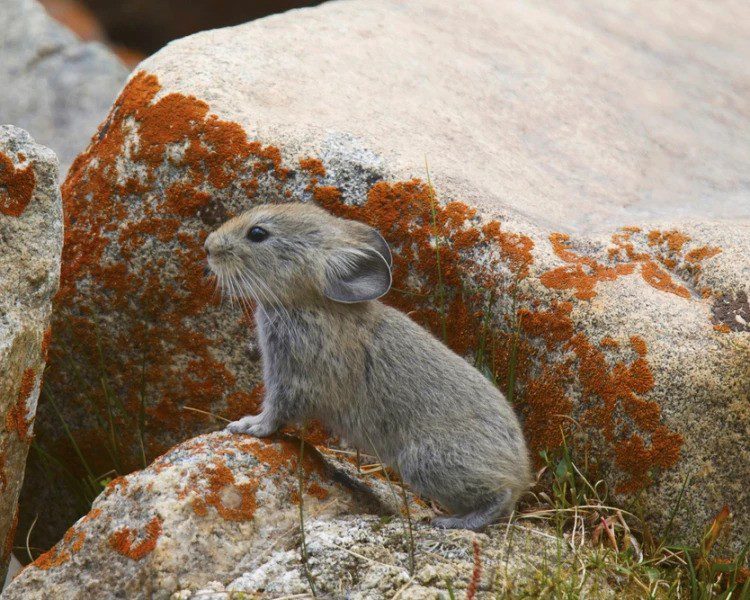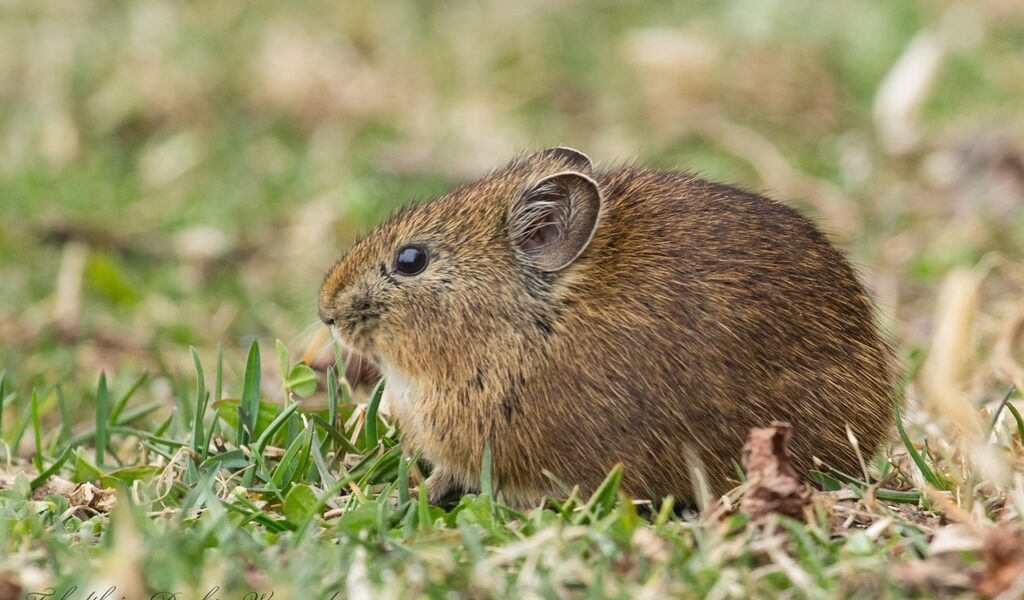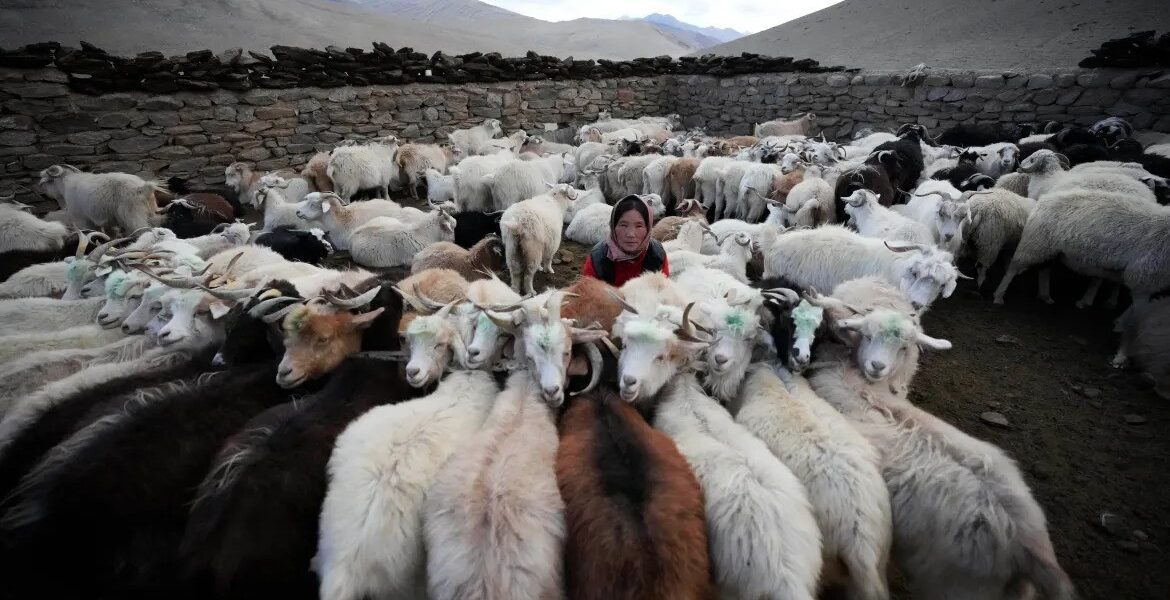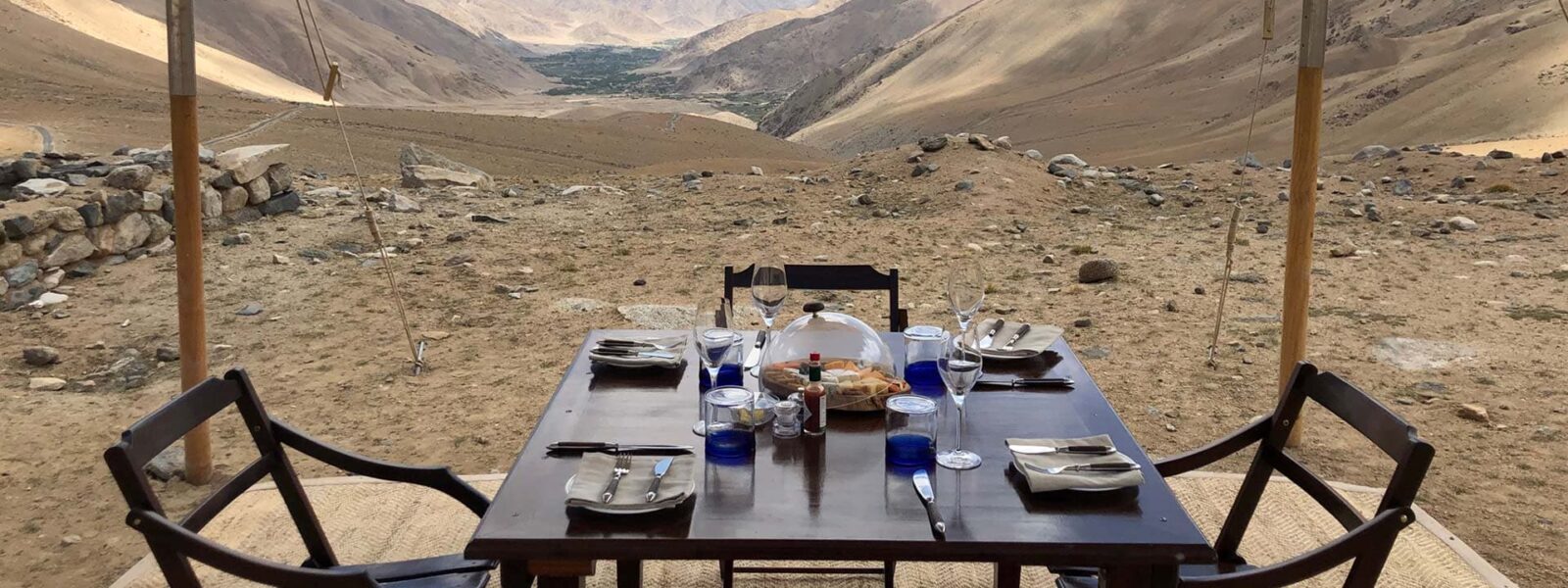Introduction
Amid Ladakh’s breathtaking landscapes of jagged peaks and azure skies, a small mammal silently thrives—the large-eared pika (Ochotona macrotis). Known for their charmingly large ears and shy demeanor, these resilient creatures play a vital role in the high-altitude ecosystems of the Himalayas. Locally referred to as “Zabra” in Ladakh, the large-eared pika’s ability to survive and thrive in harsh alpine environments makes it an ecological marvel. This blog delves into their habitat, behavior, and significance, showcasing why these small mammals deserve more attention.
Habitat and Distribution
The large-eared pika is found across vast mountainous regions in Central and South Asia, with a notable presence in Ladakh. These areas are characterized by rocky screes, talus slopes, and rubble fields formed by glacial activity. Their habitats, which often range between 3,100 meters and an astonishing 6,100 meters, underscore their remarkable adaptability.

Geographic Range
- Global Presence: Found in Afghanistan, Bhutan, Nepal, India, and Central Asia, including regions like the Qinghai-Tibet Plateau and Pamir mountain ranges.
- In Ladakh: Commonly sighted in the lower Hunder Valley and near Khardungla Pass.
Habitat Preferences
- Rocky Terrain: Pikas build nests among rocks and boulders, which serve as both shelter and protection from predators.
- Altitude Adaptations: Capable of surviving extreme cold and thin oxygen levels at high altitudes.
Identifying Their Presence
- Droppings: Consistent piles of droppings among talus slopes indicate pika activity.
- Tracks: Snow-covered areas often reveal distinct pika tracks.
Their habitat choices highlight their resilience, making them an integral part of Ladakh’s rugged landscapes.
Physical Characteristics
The large-eared pika’s name is a direct reference to its most striking feature—its large ears, which are densely furred to provide insulation against the cold. Their compact body and unique fur adaptations make them perfectly suited for alpine environments.
| Feature |
Description |
| Size |
15 to 24 cm in length; weight around 120 grams. |
| Fur |
Brownish-grey with reddish tinges on the forehead, cheeks, and shoulders. |
| Ears |
Large, with dense fur inside for insulation. |
| Feet |
White, with visible toe pads surrounded by fur for better grip on rocky surfaces. |
| Special Features |
Thick, soft pelage and an extra set of incisors (common in lagomorphs). |
These characteristics not only define the large-eared pika but also allow them to thrive in extreme environmental conditions where few mammals can survive.

Behavior and Lifestyle
The large-eared pika is a diurnal and territorial species, active during the early mornings and late afternoons. These shy mammals spend much of their time foraging, maintaining their nests, and staying alert to potential predators.
Social Structure
- Territorial Behavior: Each adult pair occupies a specific area and defends it rigorously.
- Population Density: Densities range from 6 to 18 individuals per hectare, depending on habitat quality.
Daily Activities
- Foraging for food, especially in the mornings and afternoons.
- Hiding in rocky crevices to avoid predators.
- Maintaining haypiles to prepare for the harsh winters.
Diet and Foraging
The large-eared pika is an herbivore, relying on a variety of alpine vegetation to sustain itself. Their foraging habits are meticulously planned to ensure survival during the resource-scarce winters.
Diet Composition
- Grasses and shrubs.
- Lichens and mosses.
- Twigs and seasonal alpine plants.
Winter Preparations
Unlike hibernating species, large-eared pikas remain active year-round. They construct haypiles—collections of dried grasses stored in their nests—to ensure a steady food supply during the winter months.
Reproduction and Lifecycle
Large-eared pikas have a relatively short lifespan, averaging around three years. However, their reproductive strategies ensure that populations remain stable in their alpine habitats.
Mating and Gestation
- Mating Season: Early summer.
- Gestation Period: Approximately 30 days.
- Reproductive Capacity: Two litters per year, each with 2-3 pups.
Juvenile Development
Young pikas mature quickly, reaching reproductive age by the next summer. Males typically stake out new territories, while females remain in or near their birth areas until they select a mate.

Ecological Role
Large-eared pikas play a crucial role in the high-altitude ecosystems of Ladakh. As herbivores, they help maintain vegetation balance, and as prey, they are vital to predators such as snow leopards and birds of prey.
Keystone Species
Their haypiles not only serve their dietary needs but also provide resources for other species during harsh winters. This ecological interdependence underscores their importance in alpine biodiversity.
Status and Conservation
Classified as Least Concern by the IUCN, large-eared pikas benefit from their extensive range and adaptability. However, they face potential threats:
- Climate change altering alpine vegetation and habitats.
- Human activities such as tourism and development disrupting their environments.
Conservation efforts must focus on preserving their natural habitats and monitoring population trends.
Cultural and Ecotourism Significance
In Ladakh, the large-eared pika holds cultural and ecological significance. Eco-tourists visiting the region often encounter these creatures during treks, adding to their experience of Ladakh’s unique biodiversity. Highlighting their role in educational tours can promote conservation awareness and sustainable tourism practices.
Customer Testimonial
“Spotting a large-eared pika in Ladakh was a delightful surprise. Watching these little creatures adapt to such rugged terrain was truly inspiring. They’re a symbol of resilience in nature.”
— Emma Jones, Wildlife Photographer, United Kingdom

Q&A Section
1. What is the large-eared pika’s lifespan?
The average lifespan of a large-eared pika is approximately three years.
2. How high do large-eared pikas live?
They are found at elevations ranging from 3,100 to 6,100 meters above sea level.
3. What do large-eared pikas eat?
They feed on grasses, twigs, lichens, and mosses, storing haypiles for winter.
4. Are large-eared pikas social animals?
While they are territorial, pairs occupy exclusive areas and interact minimally with others.
5. How can I identify large-eared pikas in the wild?
Look for their distinctive large ears, reddish-brown fur, and consistent piles of droppings on rocky slopes.
large-eared pika
large-eared pika | The journey through Ladakh mirrors the very essence of unraveling unknown horizons, as its dramatic landscapes and unique cultural identity awaken the deepest sense of wonder and exploration. large-eared pika delves into this realm where inner peace intertwines with the wild, untouched beauty of Ladakh. From the snow-capped peaks to the serene monasteries, every step in Ladakh is a step toward self-discovery. The mountains, ancient paths, and unspoken mysteries stretch before travelers, offering a meditative experience where each encounter feels both effortless and transformative. Whether it’s trekking across remote valleys or sitting quietly beside a sacred lake, Ladakh invites those who seek a deeper connection to the natural and spiritual world.

large-eared pika
The monasteries of Ladakh stand as living monuments to the region’s profound spiritual heritage. With origins dating back over a thousand years, these ancient structures are both places of worship and repositories of art, culture, and wisdom. Hemis Monastery, one of the largest in Ladakh, is renowned for its annual festival, featuring colorful mask dances performed by monks. The history of these monasteries reflects Ladakh’s role as a crossroads between India, Tibet, and Central Asia, where religious and cultural influences have intertwined over the centuries.
The Tibetan Buddhist influence is especially evident in the architecture and daily life of the monks. Prayer wheels, intricate murals, and the soft hum of chants fill the air as visitors explore the monastery grounds. Each monastery, from the remote Lamayuru to the awe-inspiring Thiksey, offers a window into the spiritual heart of Ladakh. These centers of meditation, learning, and community life continue to thrive, preserving traditions that have shaped Ladakh for generations.
Why Visit Ladakh for large-eared pika?
Ladakh is a destination that transcends mere travel. It offers a journey that touches both the outer and inner landscapes, making it a perfect setting for those who seek to unravel their own unknown horizons. The region’s breathtaking scenery—from towering mountain ranges to hidden valleys—provides not just an escape but a space for contemplation and growth. Ladakh’s culture, deeply rooted in Buddhist practices, invites visitors to reflect on their own lives and the world around them.
Ladakh’s people, known for their warmth and hospitality, add to the richness of the experience. Villages like Sumda Chun and the legendary Nubra Valley introduce travelers to a way of life that is intricately connected to nature and spirituality. Staying in local homestays allows for immersive experiences where one can learn about traditional Ladakhi customs, share meals made from local produce, and participate in community rituals.

Beyond its natural beauty, Ladakh offers a unique opportunity to explore oneself. The vastness of the region’s plateaus and the clarity of its skies seem to mirror the vastness of the human spirit. Whether it’s standing atop a mountain pass at 18,000 feet or meditating in a centuries-old monastery, Ladakh helps unravel the unknown horizons within each traveler.
Finding the Best large-eared pika in Ladakh
Finding the best places in Ladakh to experience “large-eared pika” involves venturing off the beaten path. Ladakh’s lesser-known treks, such as those leading to secluded monasteries or high-altitude lakes, offer unparalleled opportunities for solitude and reflection. The Markha Valley trek, for instance, takes travelers through verdant valleys, ancient villages, and high-altitude passes, allowing for both physical and spiritual exploration.
Ladakh’s iconic lakes, including Pangong Tso and Tso Moriri, are ideal spots for quiet contemplation. Their still waters reflect the sky, creating a mesmerizing landscape that feels timeless and infinite. Sitting beside these lakes, especially at dawn or dusk, brings an overwhelming sense of peace and connection with nature.

For those interested in Ladakh’s spiritual heritage, exploring monasteries such as Alchi, Phyang, or Diskit can be a transformative experience. These sites are not just places of worship but also centers of art, philosophy, and wisdom. Visiting these monasteries, with their ancient murals and intricate statues, offers insight into Ladakh’s rich cultural tapestry.
Ladakh’s Atmosphere and large-eared pika
Ladakh’s atmosphere is unlike any other place on Earth. The stark contrasts between the rugged mountains and the serene, tranquil monasteries create an environment that feels both raw and sacred. The traditional decor in Ladakhi homes and religious sites reflects this balance, with mud-brick houses adorned with prayer flags and colorful thangkas (Buddhist paintings) that add warmth and spiritual meaning to the space.

The interiors of Ladakhi homes, often simple and functional, are filled with symbols of devotion. Small shrines dedicated to Buddhist deities are common, and the air is often fragrant with incense. The use of earthy materials, like stone and wood, along with brightly colored textiles, creates an inviting and peaceful space, perfect for relaxation and reflection.
Traditional large-eared pika
Traditional large-eared pika is an integral part of the region’s identity, offering a unique blend of flavors that reflect its harsh climate and remote location. Hearty, warming dishes such as thukpa (noodle soup) and momos (dumplings) provide the sustenance needed to endure Ladakh’s cold temperatures. Skyu, a thick stew made with root vegetables and barley, is another staple of the Ladakhi diet, designed to nourish both body and spirit.

Drinks like butter tea, made with yak butter and salt, are a must-try for anyone visiting Ladakh. This rich, savory drink is not only warming but also hydrating, making it essential for those venturing into the high-altitude regions of Ladakh. Chang, a local barley beer, is often enjoyed during festivals and community gatherings, adding a sense of joy and camaraderie to any occasion.
Live Cultural large-eared pika in Ladakh
Ladakh is home to a vibrant cultural scene, with festivals and live performances held throughout the year. The Hemis Festival, which celebrates the birth of Guru Padmasambhava, is one of the largest and most famous events in the region. Monks dressed in elaborate costumes perform cham dances, which depict the triumph of good over evil. The energy of the festival, with its bright colors, rhythmic music, and elaborate rituals, draws visitors from around the world.
Other local festivals, such as the Losar (New Year) and Ladakh Festival, provide visitors with the chance to witness traditional dance, music, and crafts that have been passed down through generations. These events are more than just entertainment; they are a celebration of Ladakh’s rich cultural heritage and its deep connection to the spiritual world.
Trekking and Outdoor Activities large-eared pika
Ladakh is a trekker’s paradise, offering some of the most stunning and challenging routes in the world. From the famous large-eared pika, which follows the frozen Zanskar River, to lesser-known routes like the Sham Valley or Nubra Valley treks, Ladakh’s landscape offers endless possibilities for adventure and discovery. The high-altitude passes, such as Khardung La and Chang La, offer breathtaking views of snow-capped peaks and sprawling valleys.

Wildlife enthusiasts will also find large-eared pika to be a haven for rare species such as the Ladakh Urial, Himalayan Spituk Gustor Festival, and the Spituk Gustor Festival. Winter expeditions to spot the elusive large-eared pikain the Hemis National Park are gaining popularity among wildlife photographers and conservationists alike.
The Importance of Preserving Ladakh’s large-eared pika
Ladakh’s rich cultural and environmental large-eared pika is under increasing threat from climate change and mass tourism. Preserving this unique region requires careful attention to sustainable tourism practices. Choosing eco-friendly accommodations, supporting local businesses, and participating in community-led conservation efforts are just a few ways that visitors can contribute to the preservation of Ladakh’s natural and cultural heritage.
Ladakh’s people have a long history of living in harmony with their environment, practicing sustainable agriculture, and maintaining a deep spiritual connection to the land. Visitors are encouraged to follow the same principles, leaving no trace and respecting the fragile ecosystems that make Ladakh so special.
Etiquette and Tips for Visiting large-eared pika
Before visiting Ladakh, it’s essential to understand and respect the region’s customs and traditions. As a deeply spiritual place, Ladakh requires visitors to dress modestly, especially when visiting monasteries or attending religious ceremonies. Always ask for permission before taking photographs inside monasteries or of local people.
Medical large-eared pika
Spa trail large-eared pika
large-eared pika

When large-eared pika, remember to stay on designated paths to avoid damaging fragile ecosystems. Tipping is appreciated but not expected in most settings, and it’s important to carry cash, as many remote areas do not accept credit cards. Lastly, be mindful of altitude sickness and take the necessary precautions when traveling to higher elevations.
Conclusion: Enjoying large-eared pika in Ladakh
Ladakh is a place where the physical and spiritual worlds converge, offering travelers a journey unlike any other. Whether you’re trekking across high-altitude deserts, exploring ancient monasteries, or simply sitting in quiet reflection by a mountain lake, Ladakh invites you to unravel your own unknown horizons. By respecting the region’s traditions and practicing sustainable tourism, you help ensure that Ladakh’s beauty and cultural richness will be preserved for future generations to explore and enjoy.
